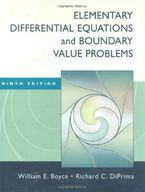Solved: Solutes in an aquifer are transported by two separate mechanisms. The process by
Chapter 11, Problem 27(choose chapter or problem)
Solutes in an aquifer are transported by two separate mechanisms. The process by which a solute is transported by the bulk motion of the flowing groundwater is called advection. In addition, the solute is spread by small-scale fluctuations in the groundwater velocity along the tortuous flow paths within individual pores, a process called mechanical dispersion. The one-dimensional form of the advection-dispersion equation for a nonreactive dissolved solute in a saturated, homogeneous, isotropic porous medium under steady, uniform flow is ct + vcx = Dcxx, 0 < x < L, t > 0, (i) where c(x, t)is the concentration of the solute, v is the average linear groundwater velocity, D is the coefficient of hydrodynamic dispersion, and L is the length of the aquifer. Suppose that the boundary conditions are c(0, t) = 0, cx(L, t) = 0, t > 0 (ii) and that the initial condition is c(x, 0) = f(x), 0 < x < L, (iii) where f(x) is the given initial concentration of the solute. (a) Assume that c(x, t) = X(x)T(t), use the method of separation of variables, and find the equations satisfied by X(x) and T(t), respectively. Show that the problem for X(x) can be written in the Sturm-Liouville form [p(x)X ] + r(x)X = 0, 0 < x < L, (iv) X(0) = 0, X (L) = 0, (v) where p(x) = r(x) = exp(vx/D). Hence the eigenvalues are real and the eigenfunctions are orthogonal with respect to the weight function r(x). (b) Let 2 = (v2/4D2). Show that the eigenfunctions are Xn(x) = evx/2D sinnx, (vi) where n satisfies the equation tanL = 2D/v. (vii) (c) Show graphically that Eq. (vii) has an infinite sequence of positive roots and that n = (2n 1)/2L for large n.(d) Show that L0r(x)X2n (x) dx = L2 + v4D2nsin2 nL.(e) Find a formal solution of the problem (i), (ii), (iii) in terms of a series of the eigenfunctionsXn(x).(f) Let v = 1, D = 0.5, L = 10, and f(x) = (x 3), where is the Dirac delta5 function.Using the solution found in part (e), plot c(x, t) versus x for several values of t, such ast = 0.5, 1, 3, 6, and 10. Also plot c(x, t) versust for several values of x. Note that the numberof terms that are needed to obtain an accurate plot depends strongly on the values of tand x.(g) Describe in a few words how the solution evolves as time advances.
Unfortunately, we don't have that question answered yet. But you can get it answered in just 5 hours by Logging in or Becoming a subscriber.
Becoming a subscriber
Or look for another answer
